Customer Lifetime Value (CLV) may be one of the most underrated metrics compared to Customer Acquisition Cost (CAC) and Return on Investment (ROI). The CLV calculation plays a huge role in showing how well your business works.
The statistics prove this:
- Existing customers spend 67% more compared to new buyers;
- 76% of companies see the lifetime value as an important metric;
- Acquiring new customers is 5-25x more expensive than retaining existing buyers.
In this guide, we’re going to figure out why the customer lifetime value model is important for any business and how to calculate it. Then, we’ll find out what to do if you don’t like your current CLV numbers.
What Is the Customer Lifetime Value?
Customer Lifetime Value (CLV; also CLTV, LCV, or LTV) stands for the total income you get from one customer while you’re doing business with them.
CLV focuses on building relationships with your existing customers and encouraging them to spend more money with your company, instead of attracting new, one-time buyers.
This metric is tightly connected with CAC. These two are what keep your business running.
For example, you sell iPhones and accessories, and it costs you $40 to acquire one loyal customer. You have to find them via Google Ads, spend money on video ad production, or use other marketing channels.
If you spend $40 per customer, you need to earn at least 3-4x more from them — in our case, that’s at least $120. If they spend less than you spend on them, you’re in trouble.
The LTV metric helps you find your most loyal customers, allowing you to better learn your target audience and optimize how to deal with them.
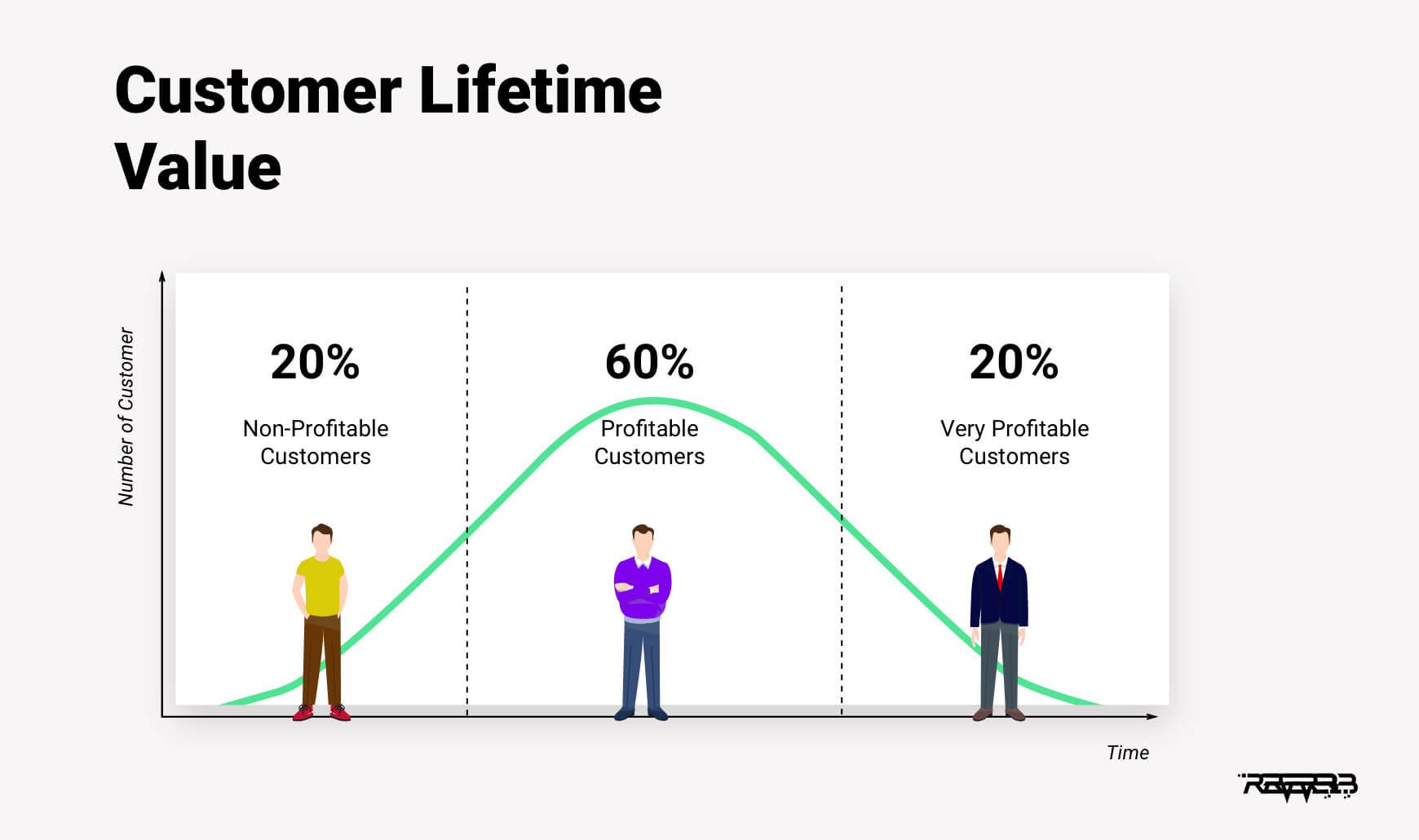
Do they make little purchases a couple of times per month? Or maybe they visit your e-commerce website twice a year but leave huge checks?
By analyzing this information, you’ll figure out which technique works for you, how to keep your customer churn high and find even better ways to engage new audiences.
How to Calculate Customer Lifetime Value
CLV goes hand in hand with other metrics. So if you want to calculate the value, you need to know them as well.
Let’s look at how to calculate LTV:
The lifetime indicator shows how long a person remains an active user of the product. The cycle goes from the very first to the very last purchase.
The average revenue per user (ARPU) is the average profit from one customer for this period. To calculate it, you need to divide your regular income for a period by the number of clients for the same period.
Customer Lifetime Value formula:
LTV = Lifetime x ARPU
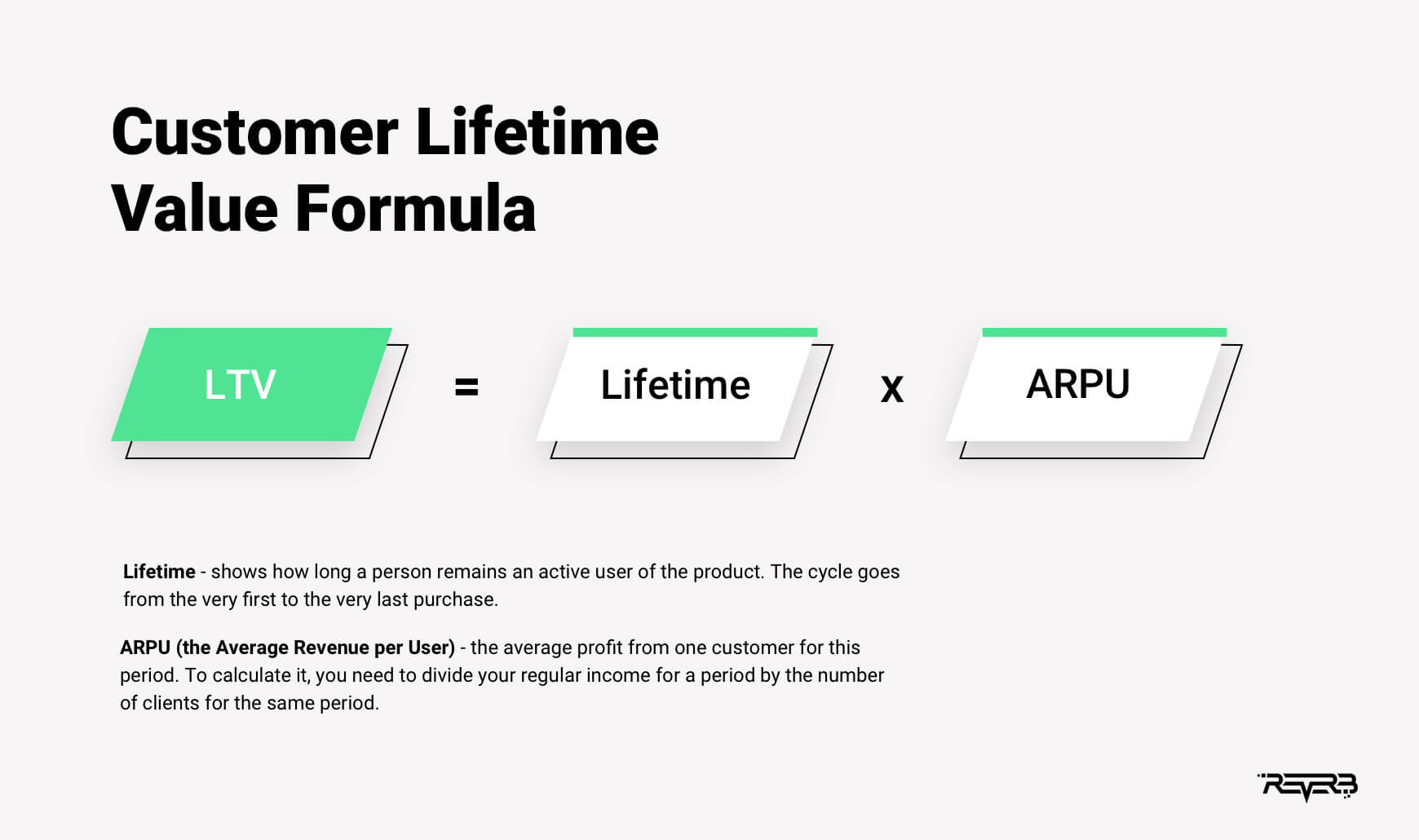
For example, you want to calculate the LTV ratio for a Netflix-like service with monthly subscriptions. You know that users prefer to buy the subscription for six months.
Monthly subscription costs $30, so your LTV in this case is $30 x 6 months = $180.
Of course, these are approximate numbers that can change at any time. That’s why these calculations are hardly one hundred percent correct.
Still, you can easily calculate the lifetime value for any period and segment of users with an average bill.
Here’s what you need:
- AOV (Average Order Value), the average order value or average bill;
- RPR (Repeat Purchase Rates), how often customers buy something from you;
- Lifetime indicator, how long your “friendship” with the customer lasts.
Multiply these numbers and you get the extended customer lifetime value formula:
LTV = AOV x PRP x Lifetime
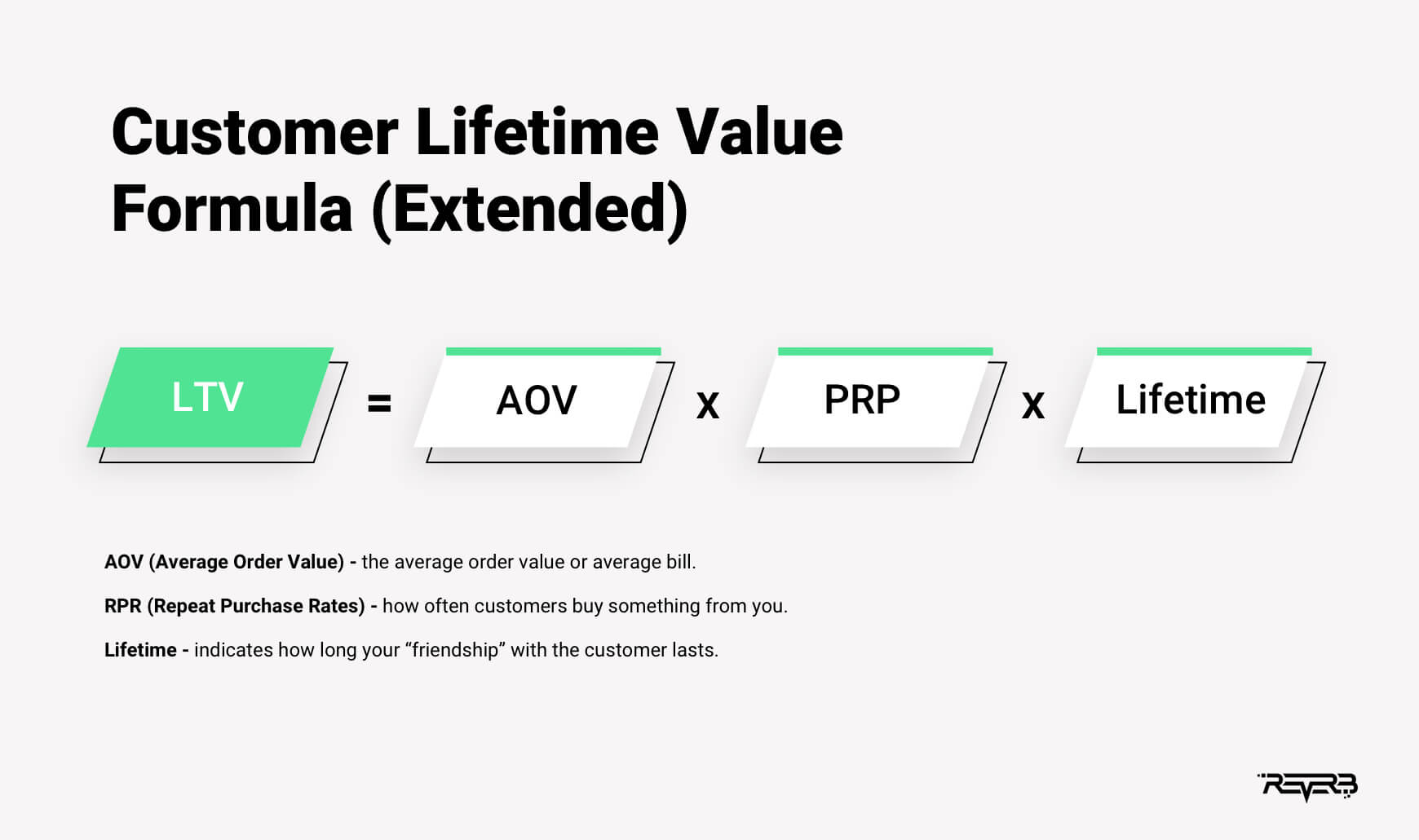
For example, you know that the average bill is $600. Your customers come back twice a year; the average lifetime is five years. Here’s how to calculate customer lifetime value in this case:
$600 x 2 times per year x 5 years = $6,000
This formula isn’t totally accurate either. You can’t predict a customer will stay with you for these five years, and you also can’t predict their average bill.
But these calculations are very convenient when you need to outline a landmark.
7 Tips on How to Increase Customer Lifetime Value
According to Marketing Metrics, there’s a 5-20% chance of selling a product or service to a new prospect, compared to a 60-70% probability of selling it to an existing customer.
Old customers have already tried and loved your product. They’re more loyal than new customers looking for the best quality for the best prices. That’s why focusing on increasing LTV makes perfect sense.
I’ve collected seven tips on how to increase customer lifetime value, as well as added a couple of well-known examples to illustrate each one.
#1. Launch a loyalty program
The customer’s life cycle is tied with the company’s churn rate. The lower the churn, the higher the customer satisfaction.
If you have hundreds of loyal customers, it may be the time to kick off a long-term loyalty program. It could boost your customers’ loyalty and thus their relationships with your products or services.
For example, Starbucks has one of the most prominent reward systems. They let customers collect ‘stars’ by spending money in the app, playing games, and so on.
As soon as users have the right amount — 25, 50, 150, and so on up to 400 — they can show up at Starbucks and grab a free coffee or other beverage.
Starbucks’ reward system offers clear benefits for long-time customers:
- Wide choice of free beverages and merchandise;
- Mobile-enhanced convenience as customers can collect stars from any device;
- Individual recognition and awards like free drinks on birthdays, etc.
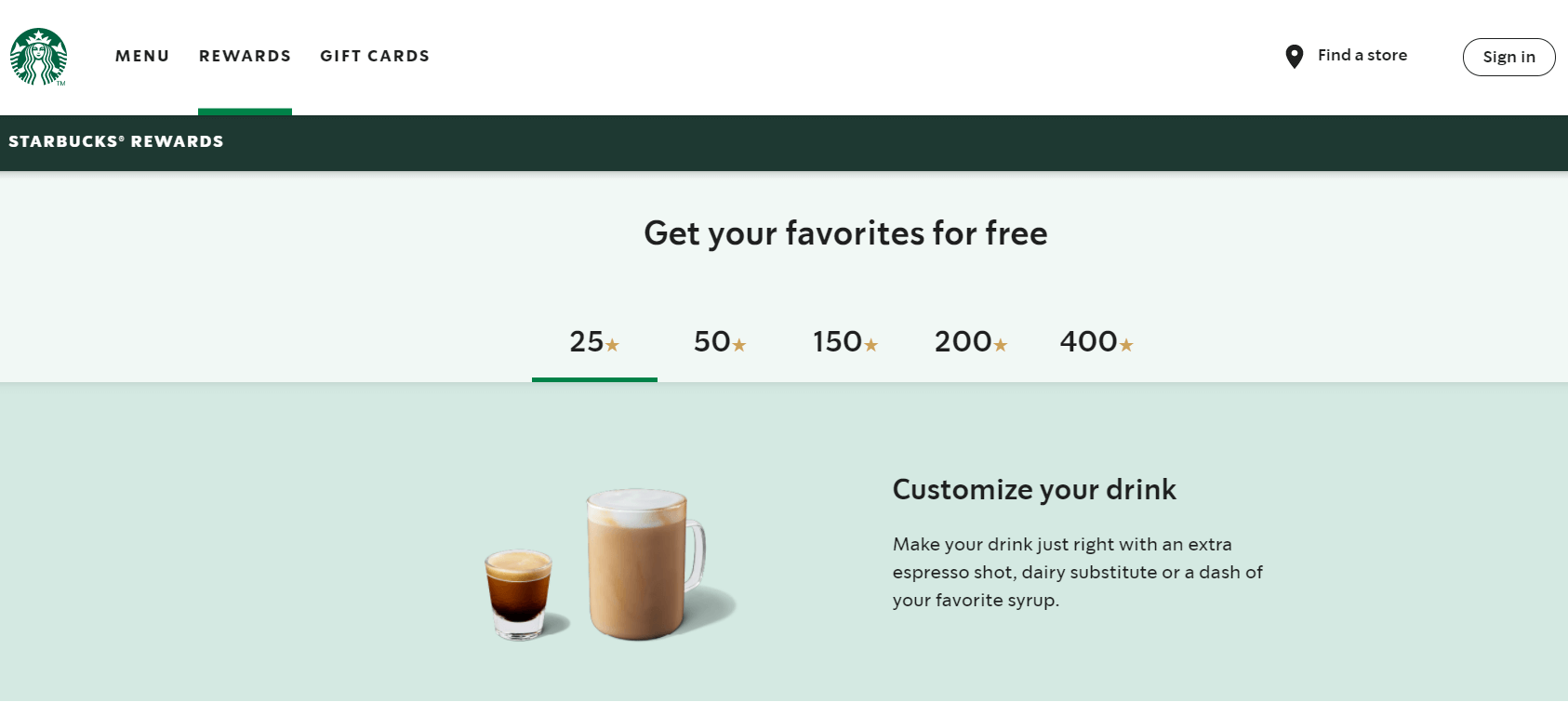
No wonder their loyalty campaign turned out to be so successful. It earned Starbucks 16 million active members and 11% growth of its user base.
#2. Optimize the onboarding process
It’s the onboarding process that lets your customers engage with your product, encouraging them to continue buying from you.
The onboarding process must be quick and understandable, and you must be ready to support new customers at any stage — with guides, how-to videos, customer support centers, and more.
For example, you’re promoting a financial app that comes with a complex registration system. Users must enter their ID number, tax number, home address, photo, and lots of other details.
A good onboarding process will include clear in-app instructions; designers will split long forms into steps, one at a time. And there might be a ‘help me’ icon to contact the customer support office directly.
#3. Offer the best service
Find a new way to fix old issues. Long-term and costly deliveries, poor product quality or lousy customer service, skyrocketing costs — these are the problems many industries share.
Take Uber, for example.
When the ridesharing startup was launching, the USA’s taxi markets could only offer high costs and low customer focus. There was a need for a cheap but nice-quality taxi service — and that’s exactly what Uber provides.
What’s even more important, moving from point A to point B is a recurring need. People who tried the service once and loved it kept coming back.
For now, Uber makes 18.7 million trips per day and is available in over 900 cities across 93 countries. They have 103 million monthly average users, many of which tried the app years ago.
#4. Use upsales wisely
Don’t forget about upsells and cross-selling; it still works.
Of course, it’s not about tricking your customers into buying extra stuff they might never need. That’s a good way to motivate people to go look at some other companies but not increase their lifetime value.
It’s all about offering users other products to accompany their purchase. For example, if a customer is buying an expensive pair of shoes, offer care products or a nice-looking bag.
If you’re more into digital marketing, you can start with email upsells outreach as the most effective way to draw attention. Write about your new services and their advantages, and use individual offers and loyalty discounts.
Anything goes and everything is used, as long it brings value to your customers.
#5. Monitor the feedback
Your customers know what they need better than anyone else. A good way to increase customer value is to constantly improve your services using the feedback people give you.
Skype does it every time you finish a call. They offer you a short survey, collecting information about any issues you faced. And it’s not just “rate us from 1 to 5,” but an option to write down a comment or complaint.
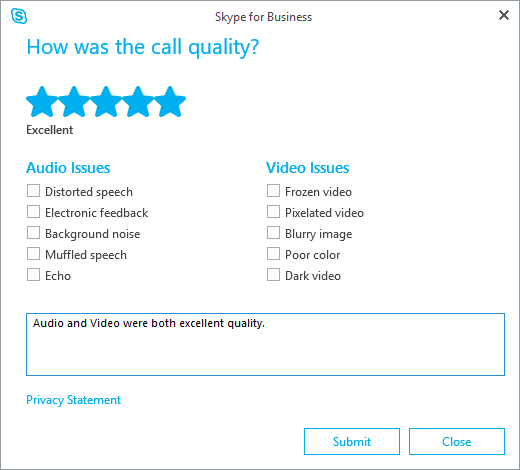
#6. Engage customers through social media
If you don’t have an Instagram or Facebook page or aren’t using Whatsapp chatbots — maybe it’s time to hire an SMM manager.
Here’s how Zoom does its social media marketing. It’s funny, entertaining, and highlights their customers’ commitment and loyalty.
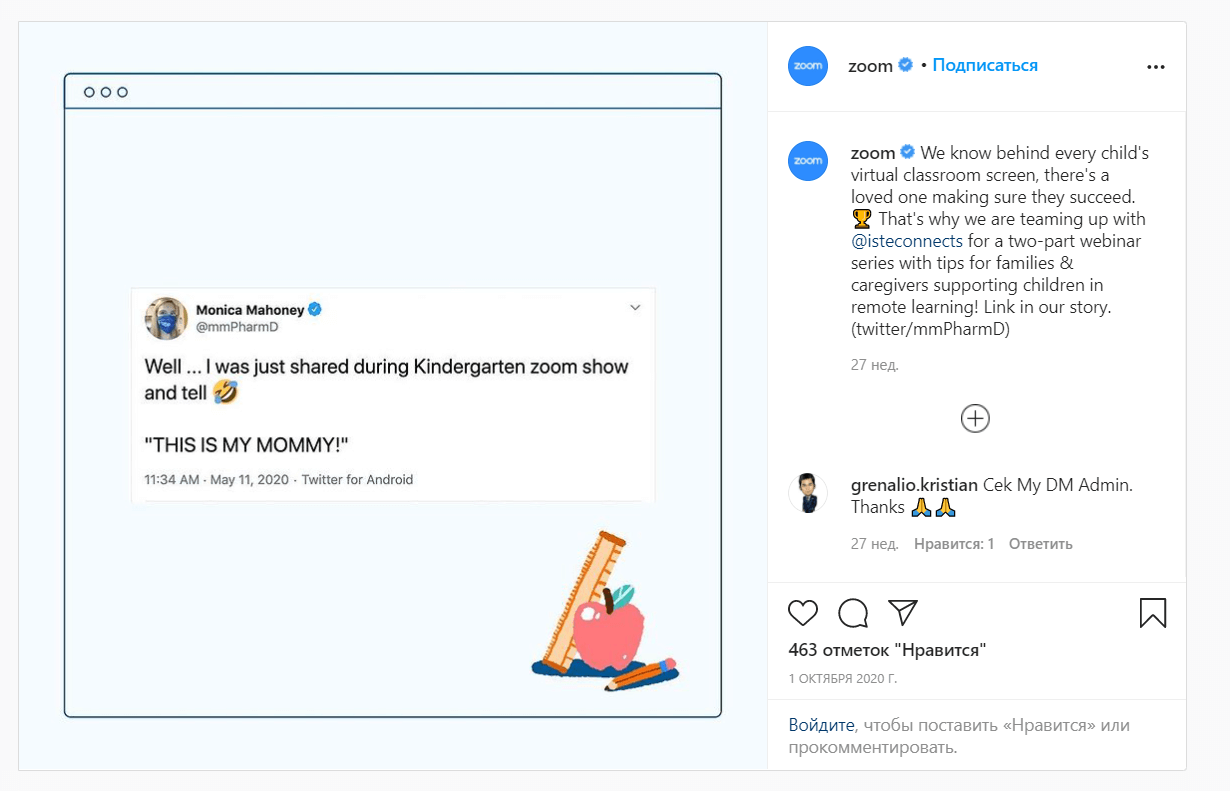
Users love it when a brand uses their content on their pages on social networks. Just don’t forget to tag the authors of posts.
With social media, your brand fans can influence the purchase decision of other customers. People do it all the time: from tweeting about great experiences they had with your brand to sharing their negative feedback in Facebook long reads.
These mentions, reviews, and their influence directly affect your sales. That’s why they can also be considered part of the lifetime value of a customer. Your job is to monitor your brand’s mentions and make sure you respond to each negative review (best done in direct messages).
#7. Improve your customer support
Your CS department doesn’t just help people avoid getting lost in the onboarding screens, they also directly represent your brand image, values, and mission. Based on the survey by RightNow & Harris Interactive, 73% of customers stay loyal to a brand because of its outstanding support.
By investing in your happy and helpful customer service, you’re investing in your CLV. It covers many points that increase customer value:
- Social media coverage as people will share their great experience on Twitter, Facebook, and other platforms.
- Upsell and cross-sell as new buyers will trust your CS team’s recommendations.
- Keeping the customers loyal to your brand.
- Encourages people to leave important feedback you can use for further improvements and many more.
Customer support is as important as marketing. It’s like the chain reaction — the better CS you provide, the more loyal customers you have.
Conclusion
Working with marketing metrics can be tricky, especially when it’s all about money. As I’ve said, customer lifetime value calculation goes hand in hand with metrics such as average order value, lifetime indicator, and many others.
Here at Reverb, we help businesses with marketing, from writing a single article to complex strategies. So if you need help understanding your website’s metrics or want to create a highly personalized and appealing marketing strategy that will improve your customer lifetime value model, message us right now!











